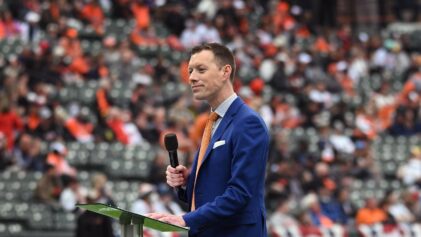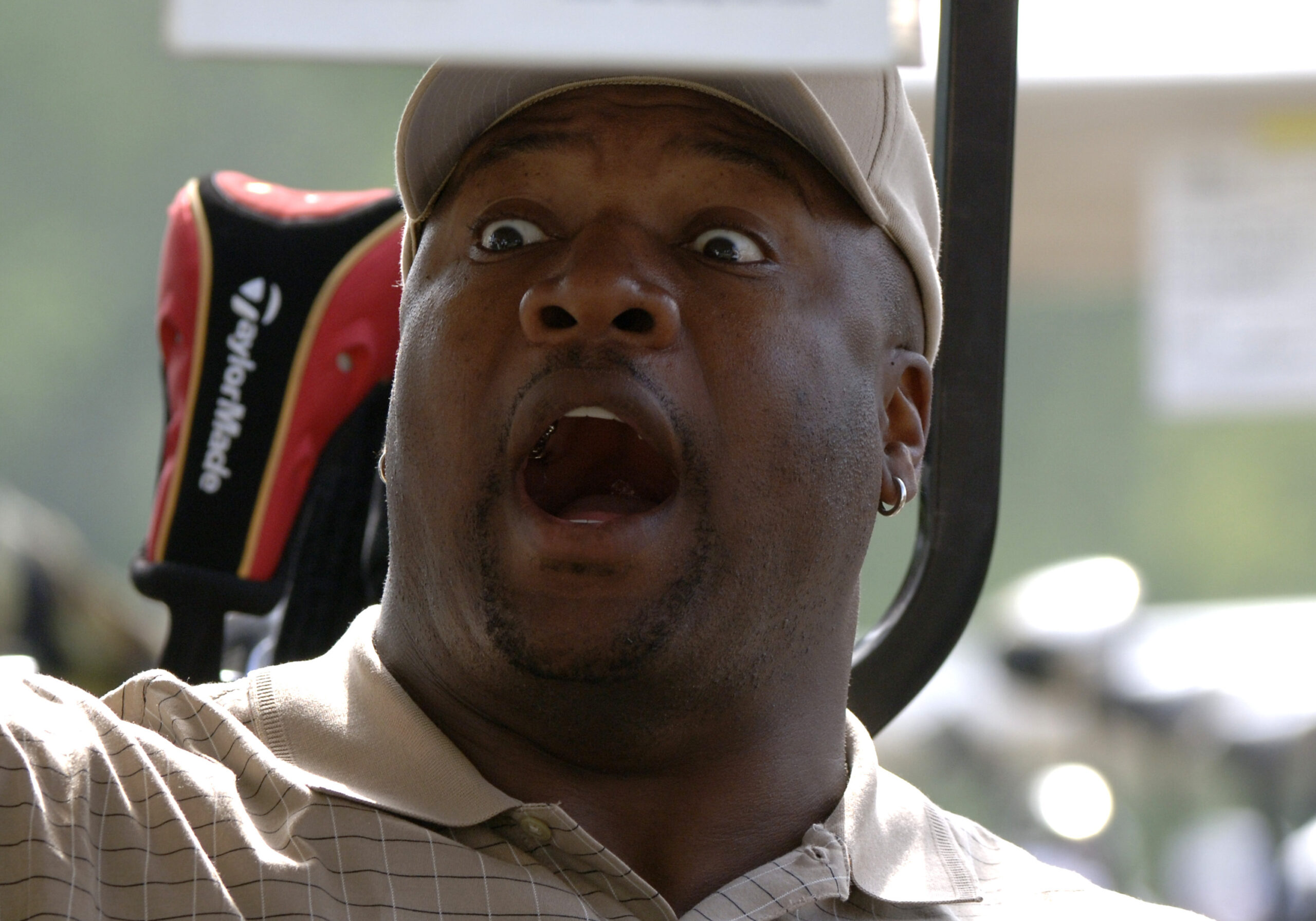In the sabermetrics baseball world where mathematical and statistical analysis rules over talent, heart, intangibles and the all-important eye test, Kansas City left fielder Alex Gordon is recognized as an elite player.
To the casual baseball fan who’s obsessed with lofty batting averages, MVP awards, gaudy numbers and blinded by big names that play in big cities, Gordon is probably the most underrated, unheralded, obscure (whatever you want to call dude) “superstar” in MLB.
Sometimes it takes the intrigue and captivating electricity of a postseason for players who have always been MVPs to their team and city, to get the proper recognition and finally be accepted as a VIP baller by the MLB masses.
Stud players on small market teams, who are perennial doormats like KC was before advancing to its first playoffs and then first ALCS since 1985, are often overlooked and left out of conversations about the top dawgs.
With his postseason mash methodology tearing through opposing teams, Gordon is a hot name in MLB circles and he’s making his face known around these parts.
Gordon has been a monster in the Royals’ unpredictable and phenomenal run in these 2014 playoffs. In Game 1 of the American League Championship series, the power-packed O’s and slap-hitting, speed-wheeling Royals seemed to switch personalities as Kansas City hit three homers and the O’s swiped a couple of bags in KC’s dramatic 8-6,10th – inning win over the B-More Orioles on Friday.
Gordon continued his, “I’m a beast up in this MLB mix,” assault on pitchers as he hit a bases clearing double that scored three and helped the Royals take a 4-0 lead early. Then for good measure, he makes a great leaping grab, takes a 95 mph-hour heater from Andrew Miller off the neck, shakes it off, makes a diving catch in the outfield and gets sweet revenge in the 10th with a go-ahead solo blast to give KC the lead (6-5). It was his fourth RBI of the game and his eighth knock of the postseason in just five career games.
Gordy trails Royals second baseman Frank White (2nd on the list with 9 RBI in 14 games) by one. Gordon’s homer proceeded Mike Moustakas’ two-run blast which iced the Game 1 victory for the Royals (5-0) who are also the first team in MLB history to win four extra inning games in the postseason.
He had less of an impact at the plate in Saturday's 6-4, Game 2 win but was a part of another clutch, gritty, ninth-inning Royals win. It's been a remarkable 55-straight innings since the Royals have trailed after a frame and KC is up 2-0 in the ALCS with two games to go for a WS trip.
TBS analyst Garry Sheffield said, "This is the team people are going to be talking about for years to come."
And rightfully so. Baltimore Orioles hadn't lost consecutive games in Camden Yards since June and the Royals were able to sweep them at the crib. One huge moment after another has been the Royals' M.O.
"Pick your poison when you want to play the Kansas City Royals,"said TBS analyst and former MLB great Pedro Martinez. Game 2's poison was injected by Mike Moustakas, who blasted his fourth dinger of the series, and even when Gordon's bat was on chill, the threat of his arm aided KC, as Baltimore was hesitant to take extra bases on him.
"Gordy just has a lot of confidence in his abilities," Royals skipper Ned Yost said about his late-blooming baller, who at the age of 30 is finally getting his MLB propers. "He's a guy that can get hit by a pitch and do exactly what he did; drive it out of the ballpark… after getting hit in the neck."
Gordon’s lock on KC's left field legacy should be labeled “The Return of A1.” That’s the name Gordon also goes by and conjures images of a youth baller who wrecked pitchers with regularity. He was a star member of the U.S. National team in 2004. He was a star at Nebraska, winning every collegiate award offered, and he was a rip-city renegade in the minors.
As is often the case when making that mountainous leap from the minor leagues to the big show, Gordon’s MLB career started slowly and most people were beginning to consider him a bust. Baseball’s such an inexact science and evaluating and projecting a prospect’s long-term success is dependent on a litany of unpredictable variables. From his rookie year in 2007 until 2010, Gordon averaged just 11 homers and had a .239 average. He flashed some speed and the potential for dopeness, but something was missing in his hitting, which caused people to ignore his total package.
After years of manning the hot corner, the team sent Gordon to AAA Omaha to work on learning the outfield in 2010. It was a pivotal point in his career because it relieved the pressure of being anointed the next city savior, which had been the common war cry because he shared the same position as legend George Brett—the most notable member of the Royals 1985 World Series squad.
Gordon used his new hitting approach and all-around talents to forge his own path.
In the spring of 2011, former Royals player and then hitting coach Kevin Seitzer began working on Gordon’s swing. The first move was to get him to quit pulling everything. Seitzer was a singles and doubles hitter during his career, and Seitzer began teaching Gordon to go up to the plate just trying to get hits.
The 2011 season was Gordon’s coming out party. In 151 games batting leadoff, Gordon hit .303 with 23 homers and 87 RBIs and added 17 steals, 45 doubles, and a WAR of 7.3.
The highly-touted "A1" had finally arrived in his fifth MLB season and he adapted to left field quickly and effectively with 20 assists and a .991 fielding percentage to win his first Gold Glove award.
In 2012, A1 continued his rise by batting .294 with 14 home runs and 72 RBI’s. His 51 doubles led the league and his canon-like wing and lethal leather garnered him a second Gold Glove Award.
Seitzer left in 2013 and it’s shown a bit with Gordon’s averaging dipping into the .260’s and doubles dropping to an average of about 30 per season. He now bats sixth in the order for this vastly improved KC squad. He doesn’t have the pressure of being the man. He can just be an integral part of a diamond-mining militia.
Gordon’s opportune hot streak has cemented his place as one of the better all-around players in the majors. He's already a top-five player in WAR in the FanGraphs metric. Gordon leads the Royals in a bunch of categories, but again, Kansas City doesn't score much, so he’s usually not in the AL top 10 in any offensive category.
In the metrics world, his saving grace is his defensive numbers. Gordon’s player grade is supported by favorable stats such as defensive runs saved and ultimate zone rating. The eye test however, is what most baseball fans use to judge a player. Gordon wasn’t popping on the radar because he never did anything on baseball’s grandest stage.
Until now.
He ‘s finally getting the chance to flex his skills and justify what sabermetrics soldiers have been saying about him for the longest time; that Gordon at least deserves a seat at the table with the Capos, even if he’s not ready to eat with the Dons. His 2014 playoff success and Royals jersey tells you, if anything, he’s ready to kick it with the kings.



